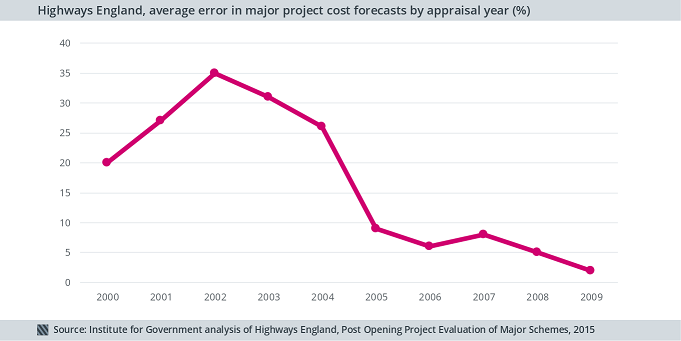Cost benefit analysis is the Government’s main way of assessing whether projects are worth doing, but its shortcomings are increasingly being debated. Andy Burnham, for example, has argued that cost benefit analysis is partly to blame for under-investment in northern infrastructure.
This week the Institute for Government released a new report entitled How to value infrastructure: Improving cost benefit analysis - 20 Sept 2017, which identified four key weaknesses:
• It struggles to account for all relevant impacts;
• Costs are routinely underestimated;
• Some costs and benefits aren’t consistently analysed between projects;
• Cost benefit analysis is not communicated clearly – leading to misunderstanding both by politicians, senior civil servants and the public.
But used properly, cost benefit analysis can give decision-makers an idea of the value of different options and how they could be prioritised. Cost benefit analysis should not be abandoned. Instead, the Institute for Government sets out a number of recommendations to improve its use.
To capture all the relevant impact the Treasury and the Department for Transport must produce updated guidance for analysts to estimate the dynamic effects of infrastructure on the behaviour of firms, workers and consumers. For example, individuals and firms may relocate or take new, more productive, jobs in response to new transport links.
There are risks of undervaluing the dynamic effects because they are hard to include. Equally there is the risk of overvaluation because industry models often lack transparency and high numbers that have little credibility.
The Government must provide better guidance for analysts on reasonable assumptions and models they can use, ensuring that realistic dynamic effects are projected for major projects. Equally, marginal projects with little value are not assumed to have implausibly large dynamic effects.
To avoid major cost overruns, the Government must make better use of the data it has from past projects to sense-check how realistic its cost-estimates for future projects are. Public bodies such as Highways England have already improved their cost estimates through ‘reference class forecasting’.

To improve the consistency of project appraisals, Government departments must produce standardised guidance on valuation and presentation. There is already substantial expertise within the Department for Environment, Food & Rural Affairs (Defra) on valuing environmental effects, and the Department for Transport has expertise on valuing carbon emissions, noise and safety. Analysts in other Government departments need to draw on it.
Ministers and senior civil servants, the people ultimately using the results of cost benefit analysis, must use cost benefit analysis constructively and critically.
Senior civil servants and ministers must understand the uncertainty of estimates to have the confidence to challenge the underpinning assumptions. To do this the Government should expand the training for senior civil servants and ministers. The curriculum of the Major Project Leadership Academy, a collaboration with Oxford University under the Civil Service Reform Plan, should encompass the scrutiny of economic cases for projects.
These reforms, alongside others the Institute for Government outline in the full report, would help enable the Government to commission projects that will help transform the UK economy, and avoid expensive overruns like the Channel Tunnel or the embarrassing u-turns of the rail electrification programme.
Graham Atkins is a researcher at the Institute for Government.